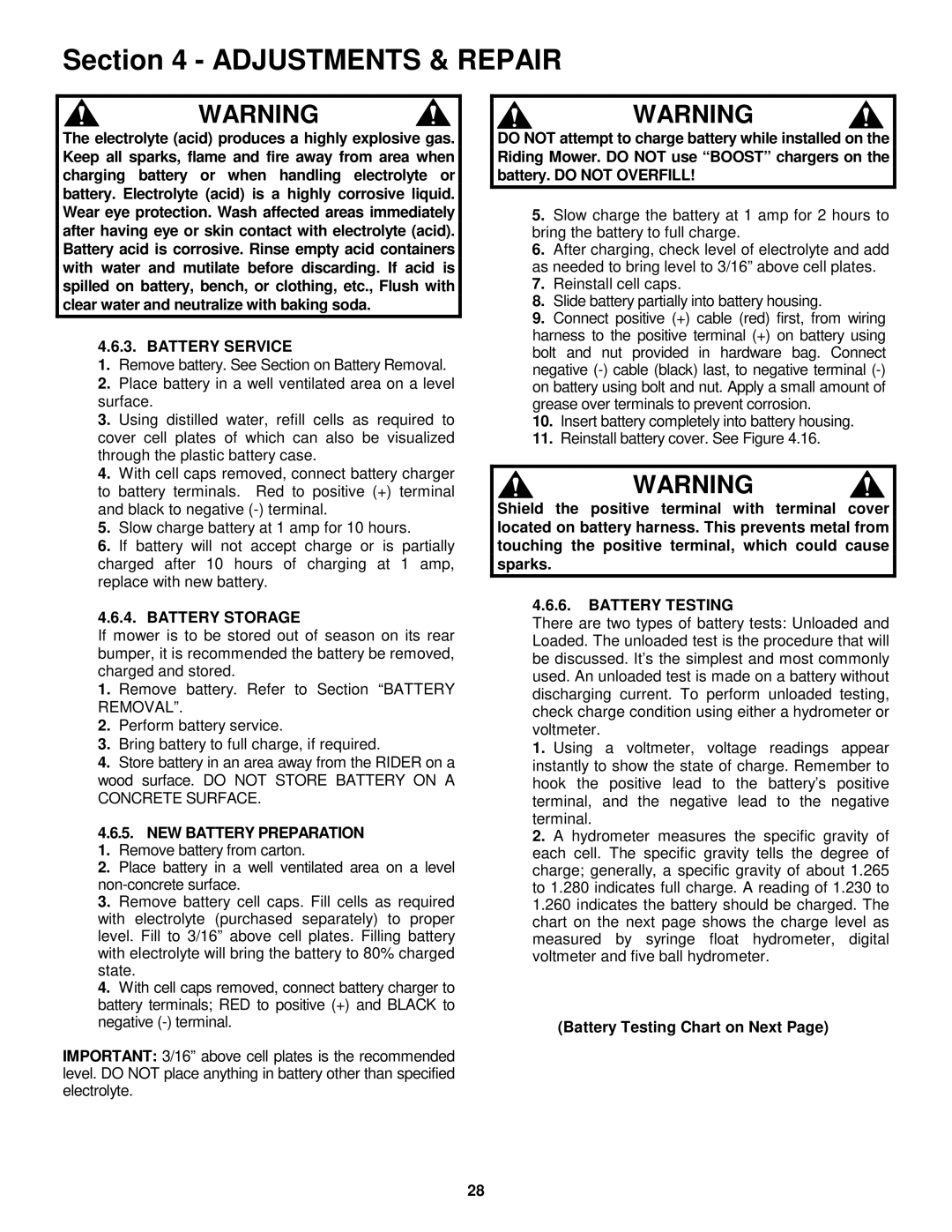E281123BVE, E281323BVE, E331523KVE specifications
The Snapper E281123BVE, E281323BVE, and E331523KVE are cutting-edge lawn mowers engineered for both performance and ease of use. These models represent the pinnacle of modern landscaping technology, offering superior features that cater to both residential and professional users.One of the standout features across these Snapper models is their powerful engine options. The E281123BVE and E281323BVE feature reliable, high-torque engines that are designed to handle even the toughest grass conditions. The E331523KVE takes it a step further with an enhanced engine that provides additional horsepower, making it ideal for larger yards or commercial applications. This ensures that users can tackle dense grass and uneven terrain with ease.
The cutting technology employed in these models is another highlight. The Snapper mowers come equipped with advanced mulching capabilities that allow for efficient clippings recycling. This system not only returns nutrients to the soil but also minimizes the need for bagging. The adjustable cutting height feature, available in all three models, allows users to easily customize their mowing experience based on grass type and desired lawn appearance.
In terms of design, the Snapper E281123BVE and E281323BVE are manufactured with a user-friendly approach. They include ergonomic handles for comfortable operation, as well as a compact frame that enhances maneuverability in tight spaces. The E331523KVE boasts a larger cutting deck, which permits quicker mowing across vast areas, thereby improving efficiency for both homeowners and professionals.
These lawn mowers are also equipped with cutting-edge technologies that elevate their functionality. Features like electric start options ensure that starting the mower is a hassle-free experience. Additionally, all three models showcase a durable construction that can withstand harsh outdoor conditions, ensuring longevity and reliability.
Safety features are paramount in the Snapper lineup. These models include innovative mechanisms that safeguard against accidental starts, while their robust design ensures stability during operation. The easy-to-access controls and intuitive layout enhance user experience, making maintenance simple and straightforward.
In summary, the Snapper E281123BVE, E281323BVE, and E331523KVE are high-performance lawn mowers that combine advanced engineering, user-friendly features, and robust safety mechanisms. With their powerful engines, efficient cutting technology, and durable construction, they stand out in the marketplace, making lawn care an effortless task for anyone. Whether for residential use or professional landscaping, these models provide a reliable solution for maintaining a pristine lawn.

